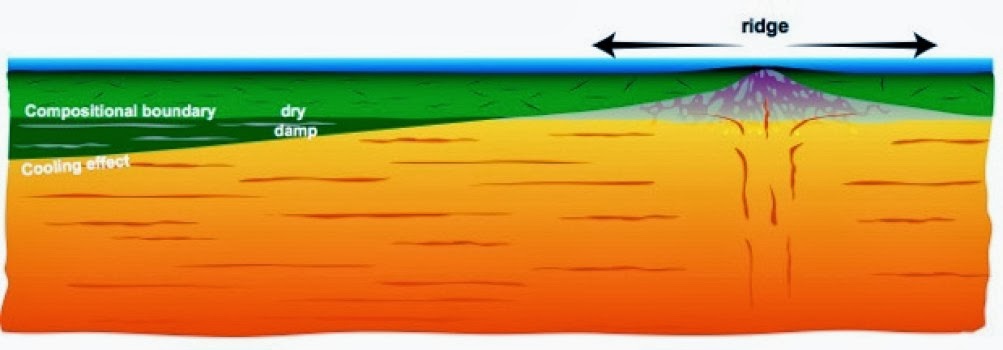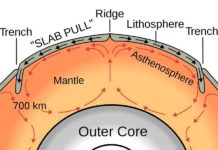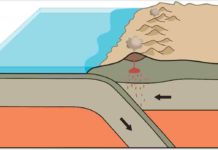
The Earth’s outer layer is made up of a series of moving, interacting plates whose motion at the surface generates earthquakes, creates volcanoes and builds mountains. Geoscientists have long sought to understand the plates’ fundamental properties and the mechanisms that cause them to move and drift, and the questions have become the subjects of lively debate.
A study published online Feb. 27 by the journal Science is a significant step toward answering those questions.
Researchers led by Caroline Beghein, assistant professor of earth, planetary and space sciences in UCLA’s College of Letters and Science, used a technique called seismic tomography to study the structure of the Pacific Plate — one of eight to 12 major plates at the surface of the Earth. The technique enabled them to determine the plate’s thickness, and to image the interior of the plate and the underlying mantle (the layer between the Earth’s crust and outer core), which they were able to relate to the direction of flow of rocks in the mantle.
“Rocks deform and flow slowly inside the Earth’s mantle, which makes the plates move at the surface,” said Beghein, the paper’s lead author. “Our research enables us to image the interior of the plate and helps us figure out how it formed and evolved.” The findings might apply to other oceanic plates as well.
Even with the new findings, Beghein said, the fundamental properties of plates “are still somewhat enigmatic.”
Seismic tomography is similar to commonly used medical imaging techniques like computed tomography, or CT, scans. But instead of using X-rays, seismic tomography employs recordings of the seismic waves generated by earthquakes, allowing scientists to detect variations in the speed of seismic waves inside the Earth. Those variations can reveal different layers within the mantle, and can help scientists determine the temperature and chemistry of the mantle rocks by comparing observed variations in wave speed with predictions from other types of geophysical data.
Seismologists often use other types of seismic data to identify this layering: They detect seismic waves that bounce off the interface that separates two layers. In their study, Beghein and co-authors compared the layering they observed using seismic tomography with the layers revealed by these other types of data. Comparing results from the different methods is a continuing challenge for geoscientists, but it is an important part of helping them understand the Earth’s structure.
“We overcame this challenge by trying to push the observational science to the highest resolutions, allowing us to more readily compare observations across datasets,” said Nicholas Schmerr, the study’s co-author and an assistant research scientist in geology at the University of Maryland.
The researchers were the first to discover that the Pacific Plate is formed by a combination of mechanisms: The plate thickens as the rocks of the mantle cool, the chemical makeup of the rocks that form the plate changes with depth, and the mechanical behavior of the rocks change with depth and their proximity to where the plate is being formed at the mid-ocean ridge.
“By modeling the behavior of seismic waves in Earth’s mantle, we discovered a transition inside the plate from the top, where the rocks didn’t deform or flow very much, to the bottom of the plate, where they are more strongly deformed by tectonic forces,” Beghein said. “This transition corresponds to a boundary between the layers that we can image with seismology and that we attribute to changes in rock composition.”
Oceanic plates form at ocean ridges and disappear into the Earth’s mantle, a process known as subduction. Among geoscientists, there is still considerable debate about what drives this evolution. Beghein and her research team advanced our understanding of how oceanic plates form and evolve as they age by using and comparing two sets of seismic data; the study revealed the presence of a compositional boundary inside the plate that appears to be linked to the formation of the plate itself.
Other co-authors of the research are Kaiqing Yuan and Zheng Xing, graduate students in UCLA’s Department of Earth, Planetary and Space Sciences.
Note : The above story is based on materials provided by University of California – Los Angeles.










